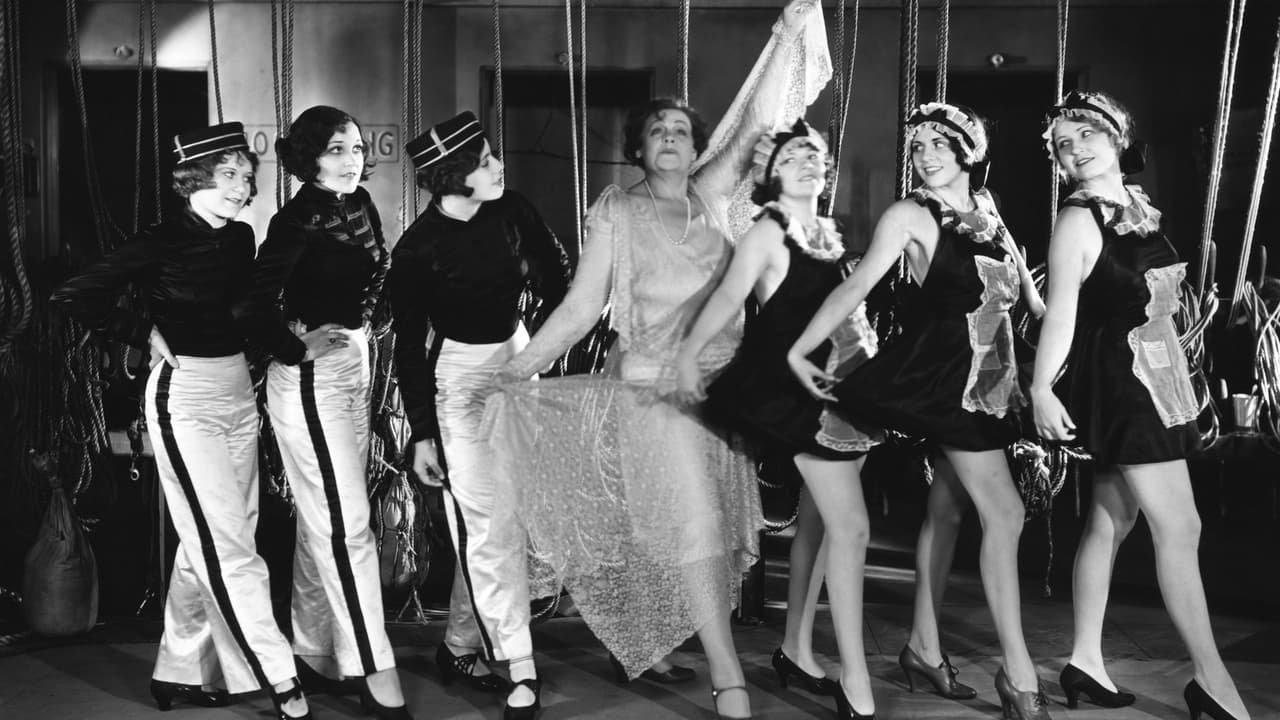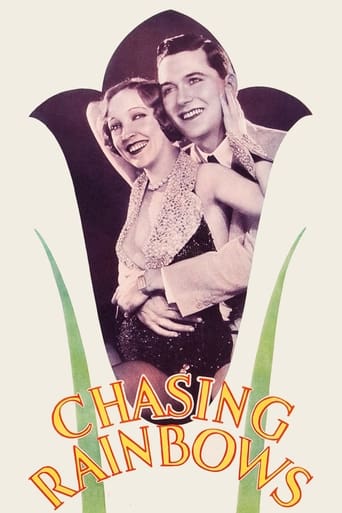

I won't repeat other reviews; I agree with almost all comments. What I'd like to address is the unprofessional editing. In one scene actors apparently are listening to Jack Benny lecturing but without sound. This is clearly a medium reaction shot, meant to have Jack's voice over. Poly Moran stands in a doorway without moving for about three seconds before action begins. An actor enters a door from the outside - you can't see the door - and then the camera pauses. Then on the inside we see the door continues to open. At the trimmed fade out you see the door start to open again. This is an A picture made by an A studio. Such gaffes are unforgivable.
... View MoreThis copy of this film on TCM was rough and appeared to be only a part of the movie that it once was. After watching it, during a Marie Dressler day, I wish more of this film existed.What is here is a story about a Vaudeville road show spending it's season run on the road. There are some trials and rough spots between the folks. The train travel seems to get the best of most of them.What is most interesting, is seeing a 35 year old Jack Benny as the stage manager trying to keep the peace between some distinctly strong personalities. What is left here works okay. It appears in 1929 that even though Benny is given opportunities to be funny here, he has not yet got the comedy timing down on film that would make him so famous later when he was 39. He does get some chances to shine.I understand a whole lot of musical numbers are missing from this and I have no doubt that the entire ending is gone as on TCM the movie just seemed to stop abruptly. I have a feeling if it were all here, I might have given the film a higher rating. As it is though, I am glad to have seen what is left.
... View MorePretty big role for Jack Benny in his very first film acting role, playing someone besides himself (acc to IMDb). He rattles off many of his one-liners as Eddie, part of the big traveling (and unraveling) road show. He should know, after all those years of vaudeville, before getting his own radio and TV shows. This movie is all about taking the show on the road, and Bonnie's (Marie Dressler) facial expressions as she gets elbowed, steam-blasted by the train, and insulted by the rest of the cast. Dressler was showing her age here (sixty something, with pretty big bags under her eyes) but that didn't slow her down any. She made SEVEN films in 1930, and only made a couple more before passing away in 1934. Two of her last ones were biggies, Tugboat Annie, and Dinner at Eight! Co-stars Bessie Love (Carlie) and Polly Moran (Polly) had also started in the silents and continued on with the talkies. Lots of backstage jokes and chiding each other, mostly by Eddie and Polly. Also an on again, off again love story between Carlie and Terry (Charles King, who only made a few films). Some serious, touching moments between the girls as they talk over their intentions regarding the men-folk. Sad to note that the color song and dance portions are missing in action - hopefully someday they will be found. Directed by Charles Reisner, who had worked his way up through every occupation, starting with the silents. Written by Robert Hopkins, who would be nominated for an Oscar for his writing on San Francisco (1936). Good story, no plot holes, very family friendly. I really enjoyed watching this one.... it wasn't as hokey as a lot of those "back-stage, behind the scenes stories" were back then. Good to see J. Benny in an early role.
... View MoreWhat a potentially great film (finally got hold of a copy), a big hit MGM musical that boasted Bessie Love, Charles King, Jack Benny, Marie Dressler, and Polly Moran.What a shame that all the Technolor is gone from the existing print, and even worse, so are all the big production numbers! Title cards appear to tell us where the numbers USED to be. Even the audio is gone.Indeed we miss Bessie Love leading a chorus in "Everybody Tap," Charles King singing "Love Ain't Nothing' but the Blues." and Marie Dressler singing "My Dynamic Personality." Also the entire finale of "Happy Days Are Here Again" is also gone. Thanks to Richard Barrios for listing the missing songs in a footnote in A SONG IN THE DARK.The few numbers that are left aren't too great. King sings "Lucky Me and Lovable You" to Love (who does not sing). But they do a short dance number. Dressler does an early number on the train, and Nina Martan (odd spelling) also sings one song.In this backstage musical about an acting company traveling across country in a show called "Goodbye Broadway," we get the usual stories about jealousy, love, etc. Love is adorable as Carlie, King is better than he was in THE Broadway MELODY, Benny is funny, and of course Dressler and Moran steal every scene they're in. George K. Arthur has a small role as a (gay?) member of the troupe, and so does Gwen Lee as the member who quits early on, requiring them to hire Martan. Eddie Phillips plays the smarmy lover.After smash hits with THE Broadway MELODY and Hollywood REVUE OF 1929, MGM launched this musical with its A Cast, but by the time the film hit theaters, the craze for musicals was winding down. Revue films were so unpopular that MGM included "Not a Revue" in its advertising for CHASING RAINBOWS. Bessie Love was MGM's #1 musical star of the time, and Marie Dressler and Polly Moran are just plain hysterically funny together.Let's hope these Technicolor musical numbers are found some day. What a treat that would be!
... View More